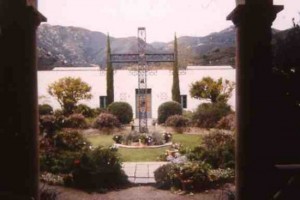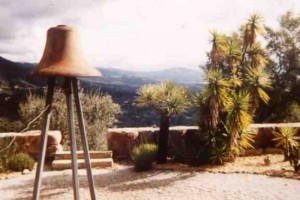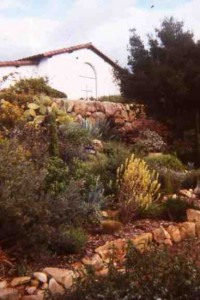Finding God in the Garden
The act of expressing beauty with each petal, stem and leaf of God’s creation is, for me, an expression of my faith and hope in Him.
Where do we see, hear, feel and inhale God’s presence? Nature is an obvious place ––mountains, oceans and vast plains stretching out as far as the eye can see –– but for many of us, the grand expanse of nature isn’t always accessible. And perhaps that’s why we turn to nature on a small scale: Our backyards and our gardens offer telling glimpses of God.
At the recent Seattle Pacific University Queen Anne and Magnolia Garden Tour, I spoke about “finding” God in the garden. I’ll admit that I feel a bit inadequate talking or writing about this subject, since it’s so difficult to fully experience God’s unlimited creativity, enormous goodwill and loving generosity in the midst of our fast-paced lives. But mere glimpses of his greatness are, I’ve decided, OK. There’s as much breathtaking joy in a split-second view of spring’s first rosebud about to open as there is in sitting on a remote mountaintop gazing at all of God’s creation.
In fact, the most surprising sense of awe I’ve experienced happens when I’m tending to my garden. I’ve been treated to many undeserved gifts: seeing a tiny hummingbird, darting from blossom to blossom, sipping at its God-provided nectar source; noticing a perennial bursting into flower, a plant I don’t recall ever having planted; or viewing a breathtaking display of the red forest pansy tree’s plum-colored leaves glowing as the afternoon sun sets behind it.
I try not to say that I have to “work” in the garden. While there are many necessary and ongoing tasks that garden-makers must undertake in order to care for their plants, to me, these are anything but work. Anyone who has a patch of earth to call his or her own should appreciate this cherished opportunity to observe creation over and over: planting a seed; providing it water, sun and fertilizer; protecting its first young leaves from pests and disease; giving it support and shelter from harsh elements as it matures; and harvesting its blooms or fruit. Then the cycle starts all over again. It’s a terrific lesson in God’s faithfulness to us, as he provides for our needs.
The Message, a contemporary translation of the gospel by SPU alumnus Eugene Peterson ‘54, reminds us in Matthew that “If God gives such attention to the appearance of wildflowers –– most of which are never even seen –– don’t you think he’ll attend to you, take pride in you, do his best for you….?”
Whether we are aware of it or not, I think the pursuit of beauty in the garden is a pursuit to know God better. The very act of gardening gives us hope. It gives us a metaphor for understanding God’s abundance and life-giving restoration. And the act of expressing beauty with each petal, stem and leaf of God’s creation is, for me, an expression of my faith and hope in Him.
If you’re not a gardener, you can find your own symbol for God’s truths. It may be taking a hike or sailing a boat, or listening to a heart-breaking symphony. But we need to embrace God’s love and slow down to rest in his presence. Even if that means pausing to see God’s greatness in the face of a tiny flower.
Having spent all of my childhood listening to my father’s sermons and my mother’s Sunday school lessons, I’ve learned a bit about giving benedictions –– the promise of hope at the end of a church service. I included a gardener’s benediction, of sorts, in my new book, Pacific Northwest Garden Survival Guide. I didn’t realize it was a benediction until I saw it in print. Perhaps it will send you off to see the garden in a new way:
“I wish you a wonderful journey that will introduce you to many generous and supportive gardening friends … May your gardens be free of slugs; may your soil be rich and organic; and may you enjoy equal parts of rain and sunshine.”
Debra Prinzing, Seattle Pacific University class of ’81, writes about interior design and gardening for The Seattle Post-Intelligencer and other national publications. She is the author of Pacific Northwest Garden Survival Guide (Fulcrum Books, 2004). She also chairs the SPU Queen Anne and Magnolia Garden Tour Committee.
Editor’s note: For more information on this topic, Prinzing recommends the following two books: Soul Gardening: Cultivating the Good Life, by Terry Hershey, Augsburg Fortress (2000) and Gardening Mercies: Finding God in Your Garden, by Laurie Ostby Kehler, Bethany House (2001).
http://www.spu.edu/depts/uc/response/summer2k4/myresponse/index.html











